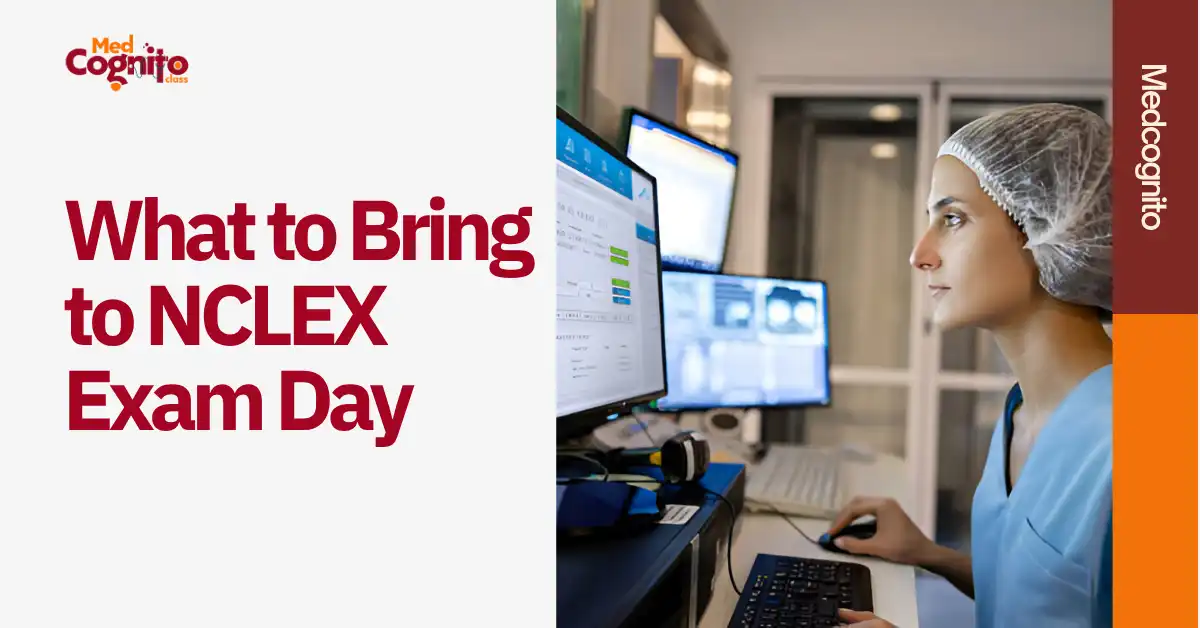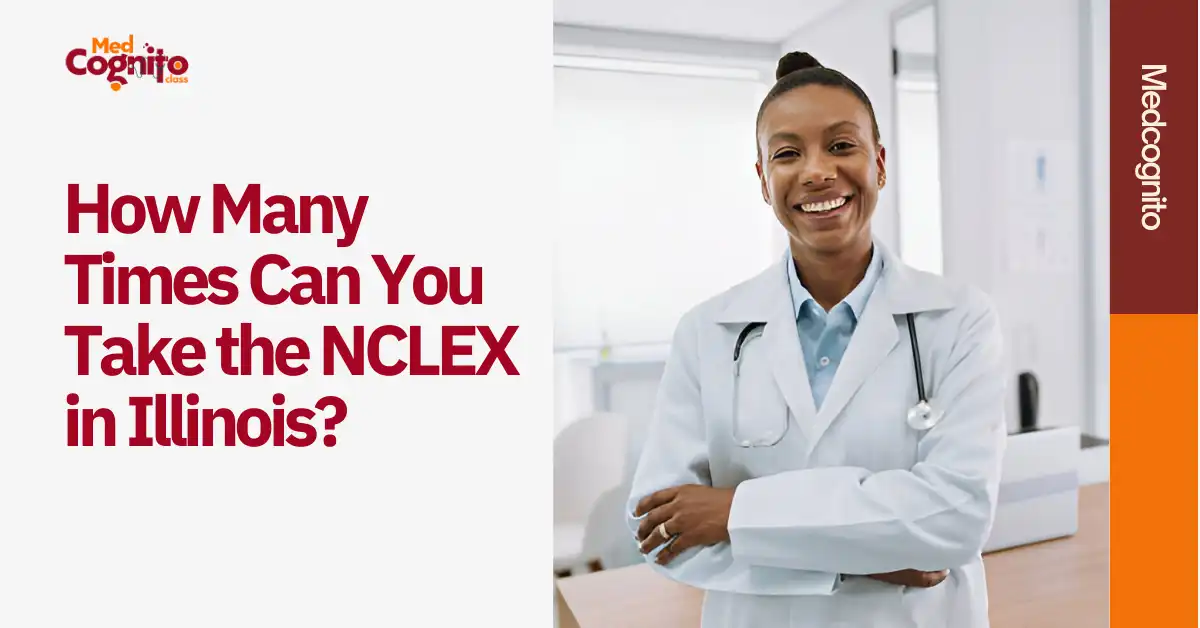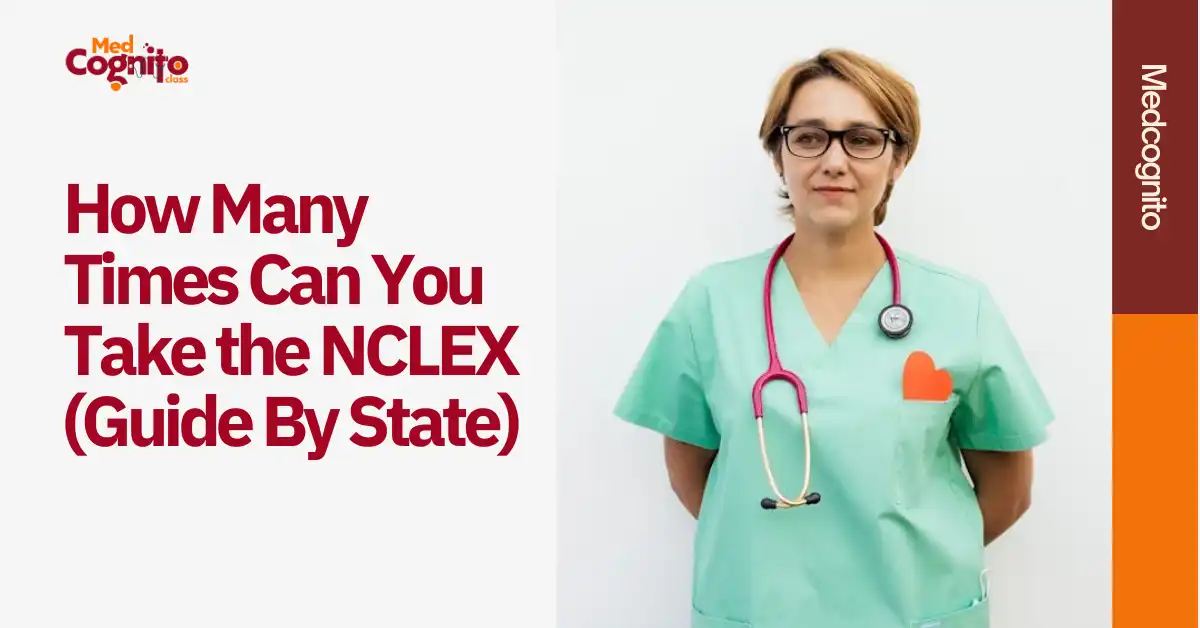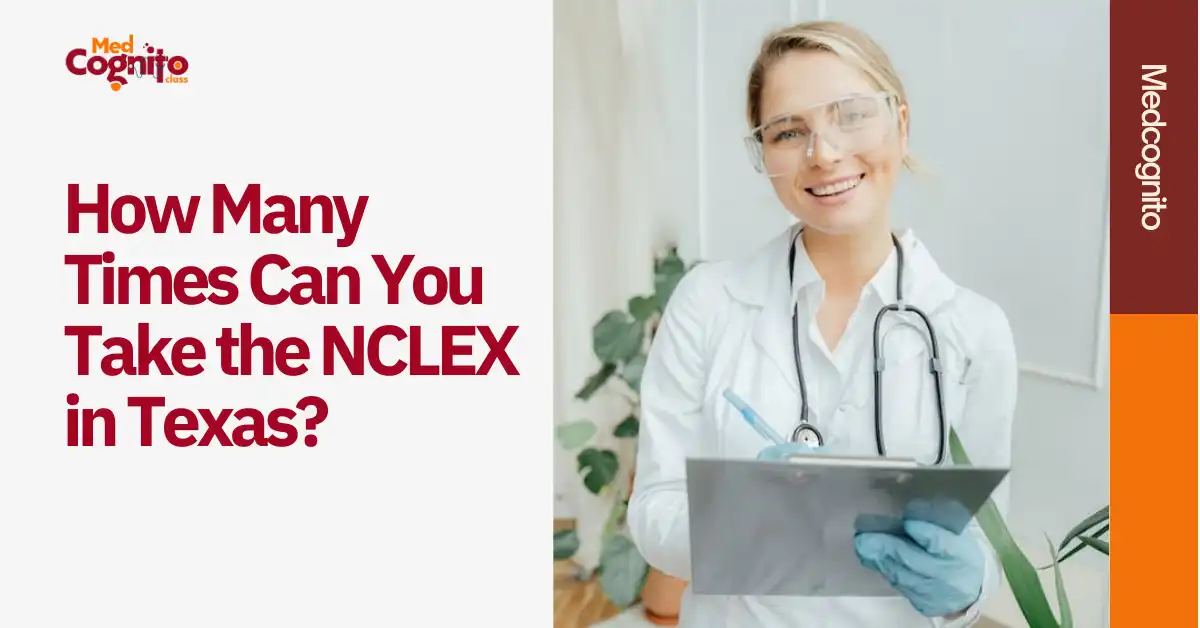The NCLEX exam is not the kind of test you can just casually stroll into. It’s the final gatekeeper standing between you and your nursing license, and exam day itself has enough rules and rituals to make even the calmest candidate sweat.
So, let’s make sure you walk in fully armed, fully ready, and fully focused.
Here’s your definitive guide on what to bring to the NCLEX, what not to bring, and what to expect at the test center with no fluff, no guesswork, and no regrets.
1. The Most Important Thing to Bring: Valid, Acceptable ID
Non-negotiable. If you forget this, you will not be allowed to test, and yes, you’ll have to reschedule and pay the exam fee.
Your ID must:
- Be government-issued (e.g., passport, driver’s license, military ID)
- Be valid (not expired)
- Contain your full name exactly as it appears on your Authorization to Test (ATT)
- Include a recent photo and your signature
Pro Tip: If your name has changed due to marriage, divorce, or legal name change, bring original documents (e.g., marriage certificate, court order) to verify your identity.
2. Your Authorization to Test (ATT) – Optional, but Smart
Technically, you don’t have to bring your printed ATT or appointment confirmation email; your test center should already have this on file.
But here’s the thing: if there’s a system glitch, you’ll want a paper trail. It costs nothing to print it and can save you a meltdown. Bring it.
3. Dress for Comfort and Control
Testing rooms are notoriously unpredictable, chilly one minute, stuffy the next.
What to wear:
- Layered clothing: A light T-shirt plus a zip-up sweatshirt or cardigan (hoodies may be flagged).
- Comfortable shoes: Closed-toe sneakers or flats. No noisy heels or slippery sandals.
- Simple accessories: Avoid jewelry unless it’s religious or medical. You’ll likely be asked to remove anything flashy.
Note: Outerwear, hats, scarves, and gloves must be left outside the testing room (unless for cultural or religious reasons).
4. Snacks and Water (for Breaks Only)
You can’t eat or drink during the actual exam, but you can bring:
- A small water bottle
- Light snacks like granola bars, trail mix, or fruit
Store them in your locker and access them during your optional breaks. You’ll thank yourself when your brain hits that 3-hour wall.
5. Medications and Medical Aids (Plan Ahead)
Need prescription meds or medical devices (like insulin pumps or earplugs)? Some are allowed, but they must follow Pearson VUE’s Comfort Aid List and often require prior approval.
Commonly allowed items include:
- Inhalers
- Eyedrops
- Non-electronic earplugs
- Medical alert bracelets
Important: If your device makes noise, like a glucose monitor, you must get clearance in advance from your testing center.
6. Optional (But Practical) Items
- Cash in small bills – Some centers have vending machines.
- Lip balm or chapstick – Just don’t bring a full cosmetics bag.
- A small tote or zip pouch – To organize your essentials.
- Hair tie or clip – You may be asked to lift your hair for a security scan.
7. What NOT to Bring
Pearson VUE doesn’t mess around. You’ll be scanned, searched, and possibly stripped of all but your ID and your brain.
Leave these at home or in your locker:
- Cell phones (must be stored in a sealed bag)
- Smartwatches, calculators, or wearable tech
- Study guides, notes, or “lucky” crystals
- Headphones (you’ll be given noise-reduction earphones)
- Food or drink in the testing room
- Friends, family, or emotional support humans are allowed to wait for you inside
8. What the Testing Center Will Provide
- An erasable whiteboard and marker
- An on-screen calculator
- Earplugs or noise-canceling headphones
- Five hours total exam time, including breaks
You won’t need pens, paper, or your own calculator.
Final Pro Tips for NCLEX Exam Day
- Arrive at least 30 minutes early – Being late by more than 30 minutes = no test, no refund.
- Be prepared for palm vein scans – Along with a photo and signature.
- Use your breaks wisely – Hydrate, stretch, breathe, reset.
- Raise your hand when you’re done – You must be formally dismissed.
Wrap-Up: Confidence Is the Real Carry-On
Yes, exam day is high-stakes. But showing up fully prepared puts the power back in your hands. You’ve done the studying. You’ve earned this shot. Don’t let logistics trip you up.
Bring what you need. Leave what you don’t. Walk in like you belong because you do.
And when you pass (because you will), you’ll remember this day not as a nerve-racking nightmare, but as your final step into the world of licensed nursing.
Frequently Asked Questions
What documents do you need for the NCLEX exam?
To take the NCLEX at a domestic test center, you’ll need one valid, government-issued photo ID. Acceptable forms of identification include:
- Passport book or card
- Driver’s license
- State or provincial/territorial ID card
- Permanent resident card
- Military ID card
Your ID must be current (not expired), show your full name as it appears on your NCLEX registration, and include a recent photo and signature.
Can I bring a water bottle to the NCLEX?
Yes, you can bring a clear, unlabeled water bottle, but it must be kept in your locker. You’re only allowed to drink it during breaks, not inside the testing room.
What can’t you wear to the NCLEX?
You can’t wear hats, scarves, gloves, or outerwear in the testing room. Exceptions are made for religious or cultural clothing.
Can I bring my purse to the NCLEX?
No, purses are not allowed in the testing room. All personal items, including bags, wallets, and phones, must be stored in a locker. Electronic devices go in a sealed plastic bag provided by the test center.
Can I chew gum during an NCLEX exam?
No, chewing gum is not allowed during the NCLEX. Eating, drinking, or making noise that may disturb others is strictly prohibited in the testing room.
Need a prep course that walks with you all the way to test day?
Explore MedCognito’s NCLEX-RN prep course built for international nurses, packed with strategy, and designed to help you pass on your first attempt.






